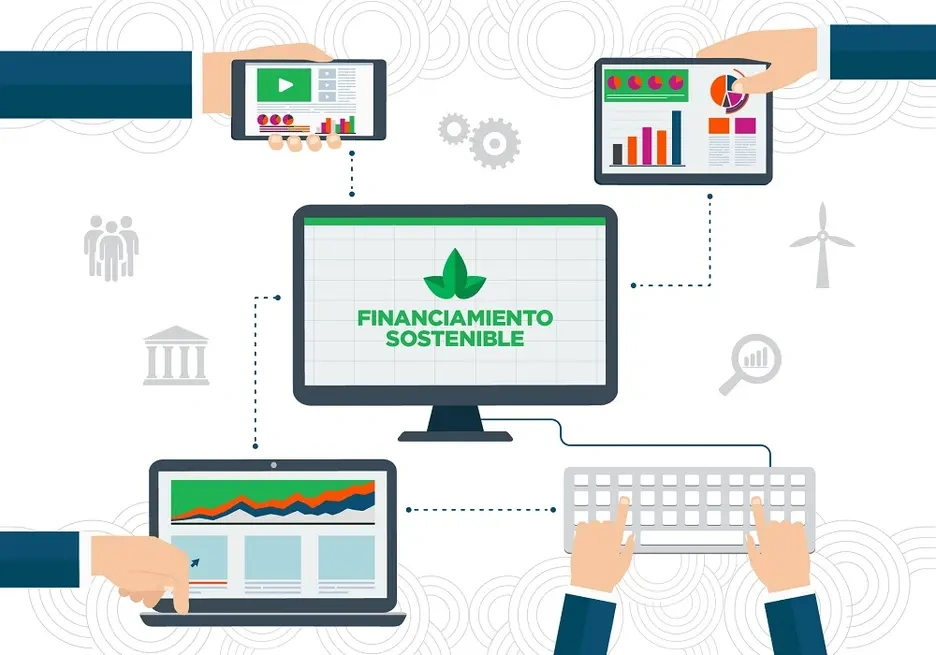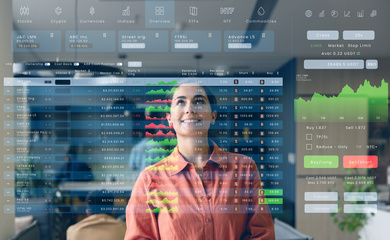Four insights for banks willing to seize sustainable finance opportunities

1. Financial data alone is not enough
It is clear, credit risk and valuation analysis are increasingly shaped by ESG factors, and no longer by financial data alone. ESG factors represent risks and opportunities that are often overlooked by relying on financial analysis alone. The recognition of climate-related risks as a systemic threat to financial stability by a number of central banks has made clear that the financial community needs to take a climate-informed and forward-looking perspective in the identification and pricing of such risks. Credit rating agencies also share this perspective. For instance, a recent S&P report highlights how unmanaged environmental and climate risks – both event-driven and those occurring over a longer time horizon – hurt a company's credit quality.
It is clear, however, that banks across Latin America and the Caribbean will require practical approaches customized to their local realities if they are to re-think their risk and opportunities analysis methods with ESG and climate in mind. This shift spans transaction generation and management, through to portfolio monitoring and evaluation. This will be particularly true for those banks that aspire to implement the Task Force on Climate-related Financial Disclosures’ recommendations.
2. Technology is a strong ally
New technologies can help capture and turn forward-looking ESG and climate-related data into business insights. An ever-increasing volume of data is now available for analysis, and today’s low-cost computing power makes it affordable. Most banks are only beginning to harness the power of available data on environmental, climate and social factors to gain actionable business insights.
In Paraguay, for instance, a country with one of the highest rates of deforestation globally, a handful of banks are piloting the use of, Global Forest Watch Pro, an algorithm-based tool that uses satellite imagery to provide early detection of deforestation and fires. For the banks, the aim is to enhance their risk management function, and thereby avoid material financial or reputational concern associated with the financing of deforestation-induced activities.
IDB Invest also uses ESG and climate-related data to screen investments for potential risks/opportunities. Recently, we collaborated with Four Twenty Seven to identify opportunities for tapping into new markets and enhancing our climate financial and non-financial offering by layering climate change data with public available data on banks’ credit portfolios, such as those available via the Asobanca’s DataLAb. The outcomes of this type of analysis – for Ecuador in Figure 1 – can help inform IDB Invest on how to target and structure new products in climate-related risk management solutions for local partner banks and their sub-borrowers.
[gallery type="slideshow" link="none" size="full" ids="8899,8901,8902"]
Figure 1. Combining financial and climate data to identify risk and opportunities for ‘climate-smart’ financing – Relative exposure of banks’ lending portfolios to climate-related hazards by province – Ecuador.
3. ESG and climate data analysis can provide banks with access to new markets and a new client engagement approach
New technologies and data are offering banks the opportunity to develop new solutions for their clients, and become strategic partners for creating value over the long-term through sustainable investments. Banks capable of aggregating, managing and integrating data and metrics on ESG and climate-related impacts with financial data can reduce their risk exposure and offer innovative sustainable finance solutions to their clients.
In El Salvador, for instance, Banco Hipotecario is using drones to manage credit risks on one hand and, on the other, enhancing its financing offering to agricultural clients. Through geo-referenced drone-captured imagery and data and advisory, Banco Hipotecario helps improve its clients’ agricultural practices by identifying and characterizing to the suitability of land to certain crops or higher yields. The bank understood that new technologies can help identify new market opportunities, and thereby gain competitive advantages.
Some international banks are taking this a step further by incentivizing clients that demonstrate superior ESG performance. BBVA, for example, has helped transform Mapfre’s 1 billion euros syndicated credit facility into a sustainable finance facility by tying interest rates to the insurer’s verified ESG-performance in addition to its credit rating.
4. Banks’ human capital needs are evolving to also incorporate an ESG and climate mindset
Banks are finding that new skills and a change in corporate culture are needed to better embrace ESG and climate data. For banks that lack these skills and culture, tapping into ‘sustainable market’ opportunities (e.g. energy efficiency financing, climate-resilient agriculture, etc.) has proved more challenging given the lack of technical knowledge to adequately identify and seize such opportunities.
Business teams will increasingly need to embed specialized expertise that have a blended skillset of finance, risk, data management and sustainability. GIS analysts are now a de facto requirement for banks that use satellite imagery to conduct remote monitoring; engineers increasingly operate alongside origination teams in identifying bankable green line projects, often with specific technology components. Management buy-in and enhanced collaboration and coordination across functions is critical to this end, and require a shift in banks’ institutional culture.
Strengthening partnerships with technical organizations is another option banks can pursue to enhance their skillset. Several IDB Invest clients benefitted from partnerships with local centers for cleaner production to build the capabilities needed to identify green opportunities particularly related to energy efficiency financing. . Together, they developed a clear understanding of the market opportunity, its risks, and the financial structuring required to offer relevant products.
Bridging capabilities gaps was a key goal of the 2018 Sustainability Week and of IDB Invest’s technical advisory activities. We at IDB Invest will continue to work with our clients in Latin America and the Caribbean to empower them to seize the opportunities offered by new data and technologies.
LIKE WHAT YOU JUST READ?
Subscribe to our mailing list to stay informed on the latest IDB Invest news, blog posts, upcoming events, and to learn more about specific areas of interest.
Subscribe



